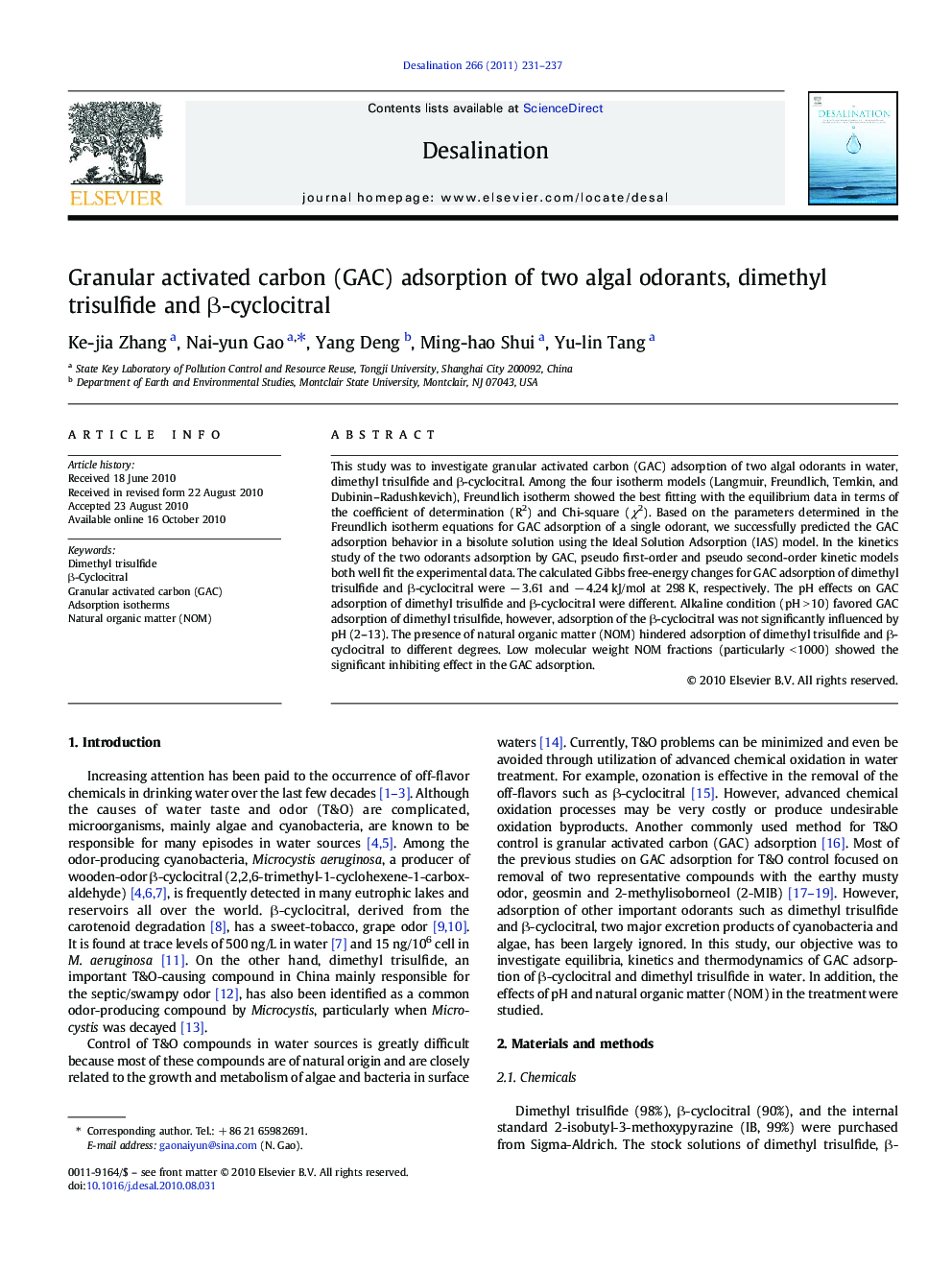| Article ID | Journal | Published Year | Pages | File Type |
|---|---|---|---|---|
| 625629 | Desalination | 2011 | 7 Pages |
This study was to investigate granular activated carbon (GAC) adsorption of two algal odorants in water, dimethyl trisulfide and β-cyclocitral. Among the four isotherm models (Langmuir, Freundlich, Temkin, and Dubinin–Radushkevich), Freundlich isotherm showed the best fitting with the equilibrium data in terms of the coefficient of determination (R2) and Chi-square (χ2). Based on the parameters determined in the Freundlich isotherm equations for GAC adsorption of a single odorant, we successfully predicted the GAC adsorption behavior in a bisolute solution using the Ideal Solution Adsorption (IAS) model. In the kinetics study of the two odorants adsorption by GAC, pseudo first-order and pseudo second-order kinetic models both well fit the experimental data. The calculated Gibbs free-energy changes for GAC adsorption of dimethyl trisulfide and β-cyclocitral were − 3.61 and − 4.24 kJ/mol at 298 K, respectively. The pH effects on GAC adsorption of dimethyl trisulfide and β-cyclocitral were different. Alkaline condition (pH > 10) favored GAC adsorption of dimethyl trisulfide, however, adsorption of the β-cyclocitral was not significantly influenced by pH (2–13). The presence of natural organic matter (NOM) hindered adsorption of dimethyl trisulfide and β-cyclocitral to different degrees. Low molecular weight NOM fractions (particularly < 1000) showed the significant inhibiting effect in the GAC adsorption.
